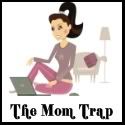How to Determine Wholsesale and Retail Prices For Your Handmade Craft Product
Saturday, May 9, 2009
 Recently I was approached by a longtime, loyal customer (although our emails are more like those exchanged between friends!), looking to branch out in her korker bow business and also had someone interested in purchasing her products at wholesale for their children's clothing and accessories website.
Recently I was approached by a longtime, loyal customer (although our emails are more like those exchanged between friends!), looking to branch out in her korker bow business and also had someone interested in purchasing her products at wholesale for their children's clothing and accessories website.
As a relatively new business, this question left her a little overwhelmed and she asked my opinion about setting her wholesale price. After digging out some of my old information, I provided her with my formula for determining wholesale pricing. And that's when it dawned me , there's probably plenty more young businesses that could benefit from this information.
However, don't fret because you are not stuck with my formula alone. I took the time today to seek out expert advice on this topic. Although, I am happy to report that their formulas and mine were very similar; basically, they can explain it better.
Bear in mind, this article is directed at those who are looking to market product crafted by them. This formula may not work well for other types of products.
The very first thing you need to do to determine your product pricing is to determine what the product is costing you. Formula: materials (cost of) + time (cost of labor) = base price (minimum).
Let's use the following as an example:
Becky is selling boutique hairbows. She purchases her ribbon wholesale at $10/100 yards (10¢ per yard). The french barrettes are purchased at $5.00/100 (5¢ per barrette). Each bow requires 3 yards of ribbon and one barrette. In addition, she requires the use of electricity to operate her hot glue gun.
The first step in her formula is going to be: $.10 x 3 + 1 x $0.05 = $0.35. Since it is difficult to determine the exact cost of electricity and glue used, I recommend using a base figure. In this case, I would use $0.10 for these two costs of production. Adding the 10¢ to the already calculated 35¢, we now have a base total of $0.45.
If Becky adds a product label (bow holder card) to her bows, she must add the cost of that into her base total. I would recommend having such items done by a professional printer if possible (you save in the long run versus purchasing your own ink, cardstock and taking into consideration wear and tear on your printer), which makes the cost easier to determine also; however, if Becky chooses to print her own labels, she must also take the cost of ink, cardstock, etc. into account.
Accounting for everything from ribbon to label, Becky's product costs her $0.78 to produce. Now, it's time for Becky to determine what she wants to make (cost of labor) per hour for her craft. She decides that she is happy earning minimum wage: $5.75/hour. The product requires 12 minutes from start to finish; so she calculates that based on a round-up to 15 minutes (or one-quarter of an hour.) So she uses the formula: $5.75 / 4 (for 1/4 hour) = $1.4375 (or $1.44). Adding $1.44 (cost of labor) to $0.78 (cost of materials), equals $2.22. This figure becomes the absolute minimum amount Becky will charge for her boutique bows.
But... who wants to work for the minimum, right? Becky sure doesn't! So, how does she come up with her retail price? She multiplies $2.22 x 2.5 (or 3, if you prefer) to equal $5.55. This becomes the price for which she sells her bows. If she wishes, she may even round that up to $5.95 for psychological marketing purposes and to cover any unexpected costs that may arise or been left unaccounted.
Becky also wants to offer her bows at wholesale too. The best way to wholesale her products is to require a minimum order; whether it is a minimum piece requirement or dollar amount.
For the sake of this article, we'll use the minimum piece requirement. Becky offers retailers, most likely those where her product offers a complimentary touch to their existing product ,wholesale pricing when they order a minimum of 50 boutique bows. For this price, Becky simply divides the $5.95 by 2 for a price of $2.975 ($2.98 per piece). A retailer purchasing the minimum will be billed $149.00 (plus any shipping cost, if necessary). Offering half off retail price is the maximum one should offer. Depending on the size of the order (larger orders being given more discount), I would recommend starting with only 15-25% off retail price.
Just a side note: for Becky's small business, I would recommend that she collects her fees in advance or, at minimum, requires a deposit totaling one-half (1/2) of the purchase price.
Retail and wholesale pricing for crafts is as sample as that! Of course, as there is always an exception to every rule, each crafter will have to work with this formula to perfect it for his/her product. And, for each product that is not identical in cost, the formula will have to be followed again to determine that specific product's price.
In closing, I'd like to remind readers that just because your cost of materials go down, don't feel that you have to lower the cost of your product. Once customers are adapted to paying a price for a product, leave it be. Price changes should reflect increase. UNLESS (sort of like the final "but") the market becomes extremely saturated with identical products, in which case greater supply produces lower demand and thus drives the price downward. One way to avoid this mishap is to ensure that your product stands out from the rest in quality, style, etc. thereby encouraging buyers to pay the additional cost for YOUR brand name.




















1 chatted about this topic:
Really great break down! I like the way that you used real examples to make it even more understandable.
Post a Comment